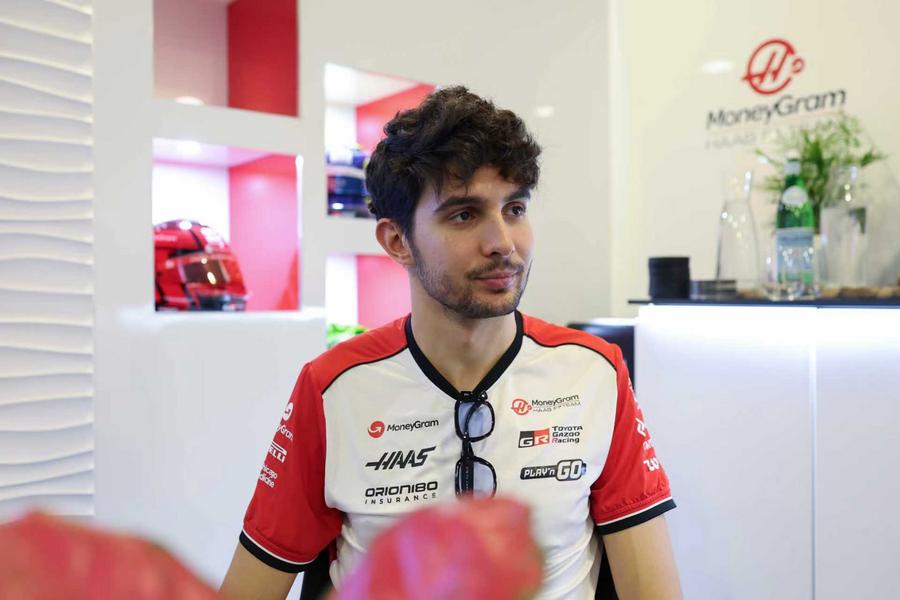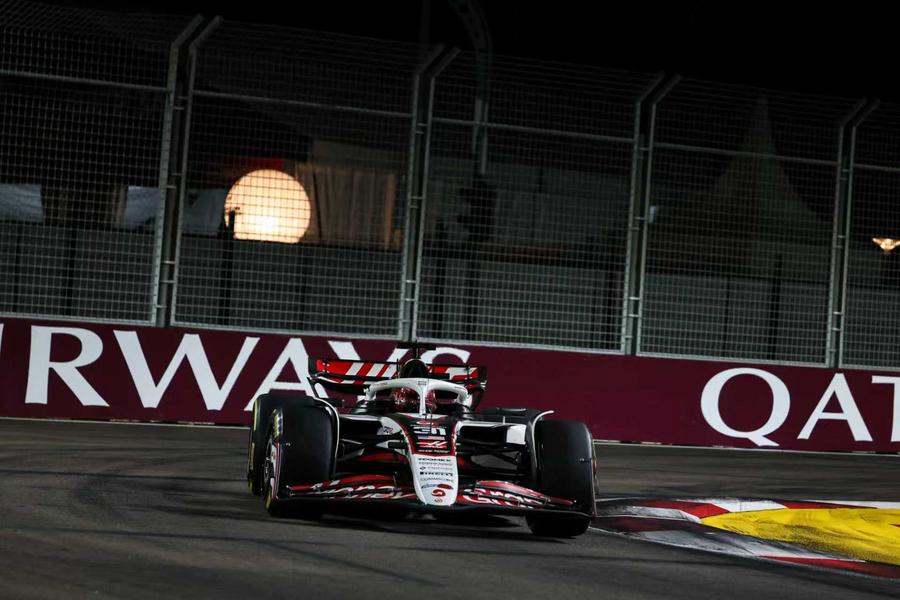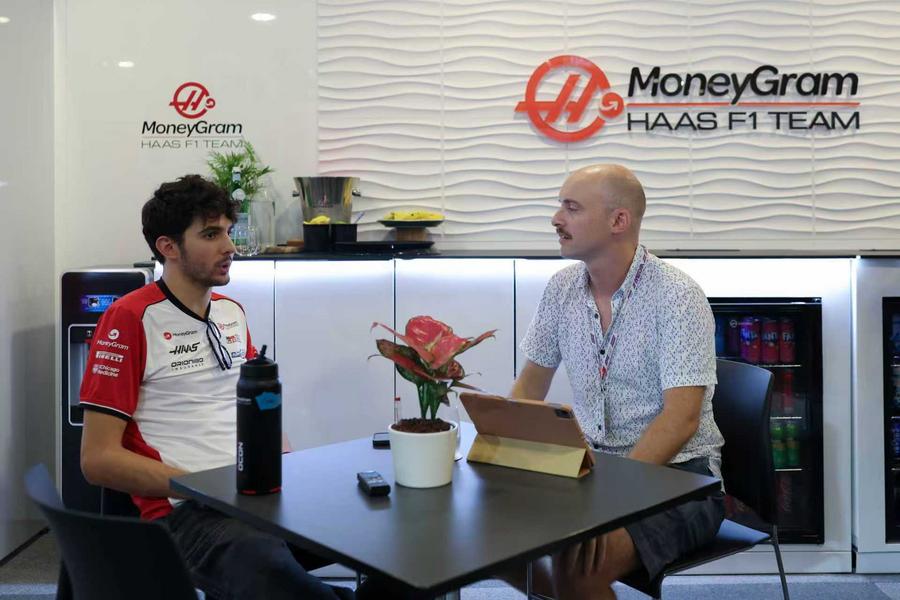 Esteban Ocon in conversation with Xinhua on the sidelines of the 2025 F1 Singapore Grand Prix at the Marina Bay Street Circuit, Oct. 2, 2025. (Photo by Qian Jun/Xinhua)
Esteban Ocon in conversation with Xinhua on the sidelines of the 2025 F1 Singapore Grand Prix at the Marina Bay Street Circuit, Oct. 2, 2025. (Photo by Qian Jun/Xinhua)
Dropped from Formula 1 in 2019 after a boardroom reshuffle, Esteban Ocon spent a year in the shadows while others raced on. Now, after clawing his way back and standing on the winner’s dais, he reflects on the politics, patience and persistence that kept his career alive.
by F1 correspondent Michael Butterworth
BEIJING, Oct. 8 (Xinhua) — When Esteban Ocon talks about the season he spent watching Formula 1 from the sidelines, he doesn’t sound angry. Just older, steadier, and perhaps a little scarred. “For various political reasons, not performance reasons, I was out of the sport,” he says. “It was terrible for myself, my entourage, my family. It was very tough.”
Things unravelled quickly. Ocon had partnered Sergio Perez at the mid-table Force India team in 2018 and was set to continue into 2019. Then the rug was pulled. When the financially troubled outfit was bought by Lawrence Stroll, the Canadian billionaire installed his son Lance in one of the seats.
With Perez well backed by a coterie of Mexican sponsors, Ocon was the fall guy – a victim of F1’s ruthless musical chairs. “I had contracts on the table ready to sign,” he says, “but due to misunderstandings between management and teams, things didn’t go to plan. It was a really disappointing outcome because I should have been racing.”
LEARNING FROM THE SIDELINES
While others fought for points on Sundays, Ocon spent his exile as Mercedes’ reserve driver, buried in simulator work and debriefs. It was a galling year, watching up close how a championship-winning team operates while knowing he wasn’t part of the show.
“It makes you stronger as a driver,” he says. “You realize where to put the focus, how important some things are. Working with a team that was dominating brought me a lot of understanding I needed for the future.”
 Ocon driving his Haas to 18th place in the Singapore Grand Prix, Oct. 5, 2025. (Photo by Qian Jun/Xinhua)
Ocon driving his Haas to 18th place in the Singapore Grand Prix, Oct. 5, 2025. (Photo by Qian Jun/Xinhua)
Being forced onto the sidelines for a year could have been the prelude to a quiet exit from F1, but Ocon redoubled his efforts to stay relevant and ensure he wasn’t forgotten about.
“Every time there was a car firing up, I was there,” he recalls determinedly. “I wasn’t sleeping for two days because I was working in the simulator, then doing debriefs. I was flat out. Teams saw that, and that’s why I came back.”
BOUNCING BACK
Few drivers ever lose an F1 race seat and find their way back into one, and fewer still go on to win. When Ocon returned to the grid with Renault in 2020, he carried both the lessons and the scars of his year on the sidelines. 12 months later in Budapest, he kept his head amid first-lap chaos to emerge at the front and claim an unexpected but fully deserved first grand prix victory.
The win was a popular one, but even the most ardent Ocon acolyte would admit the stars aligned that day. His Alpine wasn’t a front-running car, and since then, he’s rarely had the machinery to fight at the sharp end of F1. After parting ways with Alpine at the end of 2024 to lead the charge at Haas, Ocon remains in the thick of the midfield. A fifth place in Shanghai stands as his best result so far in 2025 – respectable, but not earth-shattering.
He takes it all with a shrug. “Formula 1 is cruel,” he says, calm but unsentimental. “You win in every series before you get here, and then sometimes you don’t have the car to fight for wins or podiums. It’s difficult and sad, really. But that’s how it is. You need patience, luck, and hard work. I won’t stop working until I get to that stage again.”
 Ocon speaks to Xinhua reporter Michael Butterworth in the Haas motorhome at the Marina Bay Street Circuit, Oct. 2, 2025 (Photo by Qian Jun/Xinhua)
Ocon speaks to Xinhua reporter Michael Butterworth in the Haas motorhome at the Marina Bay Street Circuit, Oct. 2, 2025 (Photo by Qian Jun/Xinhua)
RACING UNDER THE RADAR
That obsession with craft bleeds into his off-track life too. During the pandemic, Ocon found an outlet in sim racer Gran Turismo. “For me, it’s the highest level of racing because of how accessible it is,” he explains. “I’ve raced with the top sim drivers and managed to be in the top five in the world rankings. The things I’ve learned there are priceless.”
Sometimes he competes under his real name, other times anonymously. “People react differently when they see my name,” he explains. “They like to put me under the spotlight, saying, ‘Oh, he was dirty,’ creating big stories. I just want to race under the radar.”
It’s a telling glimpse into how Ocon thinks. He could easily afford the most advanced setup, yet prefers to keep things stripped-back. “I’ve got a pro sim built by professionals,” he says, “but for Gran Turismo I just use a simple chair and a Logitech wheel. I want to race with what the others have. It’s up to the best driver to deliver.”
WHAT’S EXTREME, ANYWAY?
Ocon laughs when asked about clauses in his contract. “I’m not allowed to do anything, if you read it! Normally it says no extreme sports while racing. Teams want to protect themselves. But we’re racing in Formula One, more than 300 kilometers an hour – what’s ‘extreme’?”
He’s not reckless, just pragmatic. “I’m not going skydiving, that would be stupid. But if I want to go buggy driving or drifting, I’ll do it. The important thing is to take care of yourself and be ready for the team the next time you get in the car.”
At 29, Ocon has already weathered nearly a decade in F1, though he laughs off suggestions that he’s now a veteran. “I hope not! But I’m quite experienced now. You never stop learning. Every weekend is a test.”
He’s lived through politics, broken promises, and a brutal year that could have ended everything. “You can’t control everything in this sport,” he says. “But you can control how much effort you put in, and how ready you are when the next chance comes.” ■
